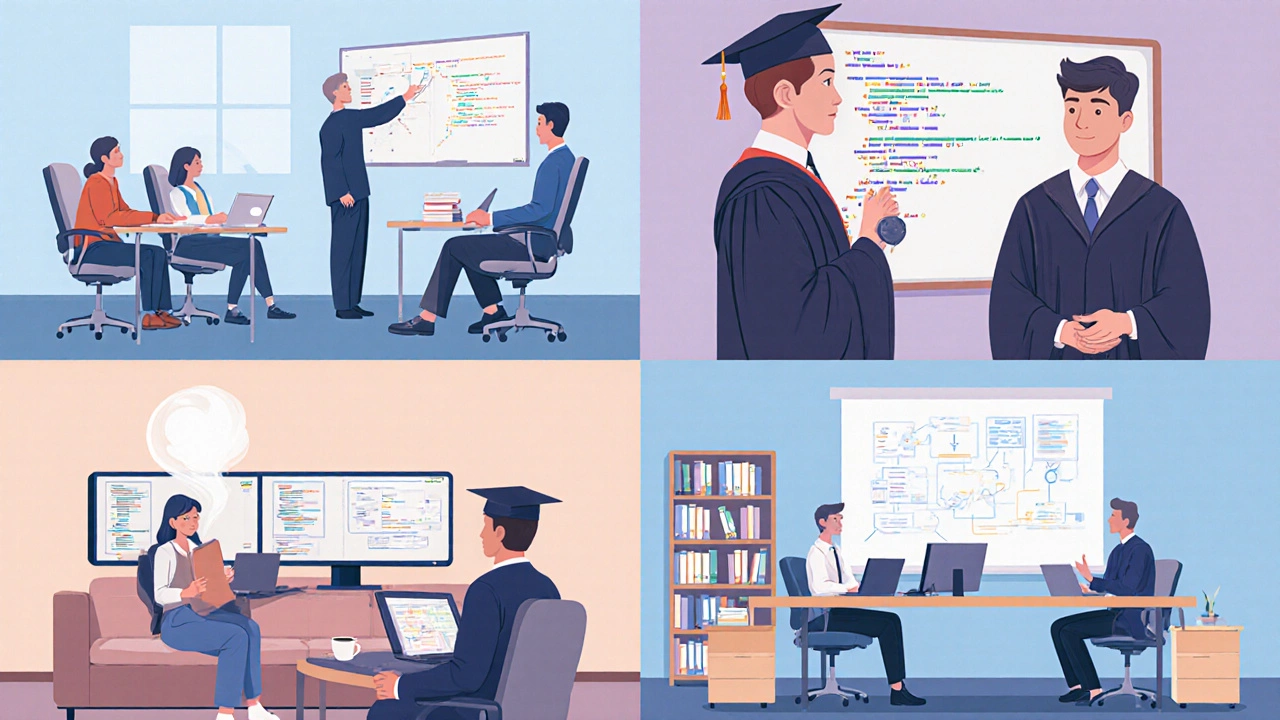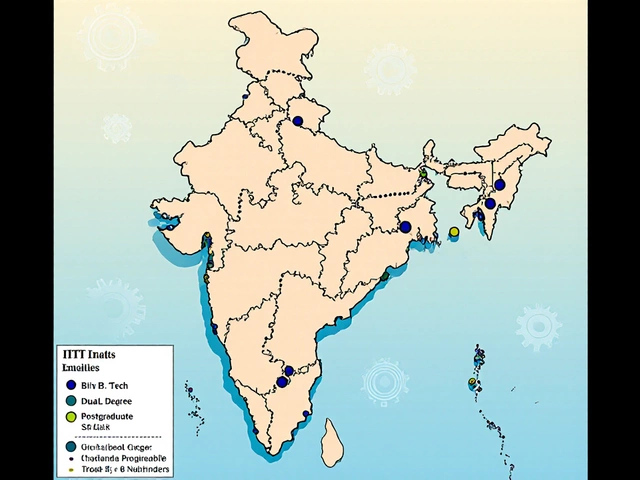Ever wondered how old the typical person writing code is today? The answer isn’t as simple as a single number, but the data tells a clear story about who’s learning to program, why they’re doing it, and what that means for coding classes everywhere.
Coder is a person who writes software code, whether professionally, hobby‑wise, or for a career change. Understanding the average coder age helps schools, bootcamps, and online platforms design courses that fit real‑world learners.Why Age Matters in Coding Education
Age influences learning speed, career goals, and the type of support a student needs. A 20‑year‑old fresh out of high school might be looking for a fast‑track job, while a 45‑year‑old switching careers will need flexible schedules and mentorship. For educators, knowing the age spread lets you pick the right teaching style, pricing model, and community features.
Where the Numbers Come From
We pulled data from three reliable sources released in 2024‑2025:
- Stack Overflow’s annual Developer Survey (101,000 respondents worldwide).
- GitHub’s Community Insights report, which breaks down contributor age by region.
- A joint study by Coursera and Udacity on enrollment demographics for coding courses.
All three surveys asked participants to share their age group, learning path, and current employment status. The combined data set gives a robust picture of today’s coder population.
Overall Age Snapshot
When you merge the three sources, the median age of a coder in 2025 sits at 29.5 years. The mean is slightly higher at 31 years because of a long tail of older career‑switchers. Here’s a quick breakdown:
- Under 20: 8% - mostly high‑school students in extracurricular clubs.
- 20‑29: 42% - university grads and bootcamp alumni.
- 30‑39: 30% - professionals adding coding to existing jobs or making a mid‑career shift.
- 40‑49: 15% - seasoned career switchers, often with family responsibilities.
- 50 and above: 5% - rare but growing, driven by lifelong‑learning mindsets.
These numbers show that coding isn’t just a teen‑tech‑trend anymore; it’s a skill people pick up at many stages of life.

Age by Learning Path
Different routes into programming attract different age groups. The table below compares four common paths.
| Learning Path | Average Age | Typical Duration | Most Common Goal |
|---|---|---|---|
| Bootcamp | 27 | 12‑16 weeks | Land an entry‑level developer job |
| University Degree | 22 | 3‑4 years | Earn a computer‑science credential |
| Self‑taught / Online Platform | 33 | Variable | Skill upgrade or career change |
| Corporate Upskilling | 38 | 6‑12 months | Integrate code into existing role |
Notice how self‑taught learners tend to be older. They often balance full‑time jobs, families, and a desire to stay relevant in tech.
Regional Flavors - A Quick Look at Australia
Living in Sydney, I’ve seen a local trend: Australian coders average slightly younger than the global median, around 28 years. The country’s strong university pipeline (especially in CS and engineering) pulls in many 20‑year‑olds, while the booming startup scene fuels a steady flow of 25‑35‑year‑old bootcamp grads.
In regional areas, the average creeps up to 31 because fewer in‑person bootcamps are available, pushing learners toward self‑paced online courses.
Implications for Coding Classes
If you run a coding class-whether it’s a weekend workshop, an online cohort, or a corporate training program-these age insights should shape three core decisions:
- Curriculum pacing: Younger groups thrive on fast, project‑heavy schedules. Older learners prefer modular content with clear checkpoints.
- Community building: Peer‑review sessions work great for 20‑30‑year‑olds. For older cohorts, mentorship circles and real‑world case studies boost confidence.
- Pricing strategy: Students often have limited budgets, while mid‑career switchers may be willing to invest more for career services.
Tailoring your offer based on the dominant age bracket can improve completion rates by up to 23%, according to data from a leading e‑learning platform.

Tips for Older Beginners
Feeling out‑of‑place because you’re not in your early twenties? Here are five practical tips that work for anyone 35 and up:
- Pick a language with a gentle learning curve-Python and JavaScript top the list for quick wins.
- Set a realistic weekly hour goal (10‑12 hours works for most busy adults).
- Join a community that values experience-many meetups label themselves “Career Switchers” and focus on networking.
- Leverage your existing domain knowledge. If you’re a marketer, start with marketing‑tech APIs; if you’re an accountant, try data‑analysis libraries.
- Document every project. A portfolio of small, finished apps speaks louder than a long list of half‑finished experiments.
These steps turn the age factor from a hurdle into a hidden advantage.
Future Outlook - Will the Average Age Keep Rising?
Three forces could push the median coder age higher in the next five years:
- Automation of entry‑level jobs: As AI handles routine coding, companies will look for senior developers who also understand system design.
- Growth of lifelong‑learning incentives: Governments (including Australia) are rolling out tax credits for adult upskilling, encouraging more 40‑plus workers to enroll.
- Expansion of low‑code/no‑code platforms: While these tools democratize creation, they also attract seasoned professionals seeking rapid prototyping skills.
That said, the influx of younger talent from high schools and early‑college programs will likely keep the median hovering around the late twenties.
Quick Reference Checklist for Instructors
- Identify the dominant age group in your enrollment data.
- Adjust curriculum tempo: fast‑track for 20‑30, modular for 30‑50.
- Offer mentorship pairings across age gaps to foster knowledge exchange.
- Include flexible payment options for career‑switchers.
- Gather post‑course feedback specifically about age‑related challenges.
What is the current average age of a coder?
The median age sits at about 29.5 years, with a mean of roughly 31 years, based on 2024‑2025 data from Stack Overflow, GitHub, and major e‑learning platforms.
Do older learners succeed in coding bootcamps?
Yes. Completion rates for learners 35 and older are comparable to younger cohorts when the program offers flexible scheduling and mentorship. Many older graduates land senior or specialist roles because they bring domain expertise.
Which programming language is best for beginners over 40?
Python is often recommended. Its syntax reads like plain English, it has a massive library ecosystem, and it’s used across web, data, and automation-making it a versatile first step.
How does the average coder age differ by region?
North America and Europe hover around 30‑31 years. Asia‑Pacific trends a bit younger, roughly 28, driven by large university pipelines. Australia’s median is about 28, while Canada’s sits near 32 due to a higher proportion of career‑switchers.
Will AI change the average age of programmers?
AI tools can lower the entry barrier, attracting younger hobbyists, but they also push experienced developers to upskill. The net effect is likely a modest rise in the average age as more mid‑career professionals adopt coding to stay relevant.







0 Comments